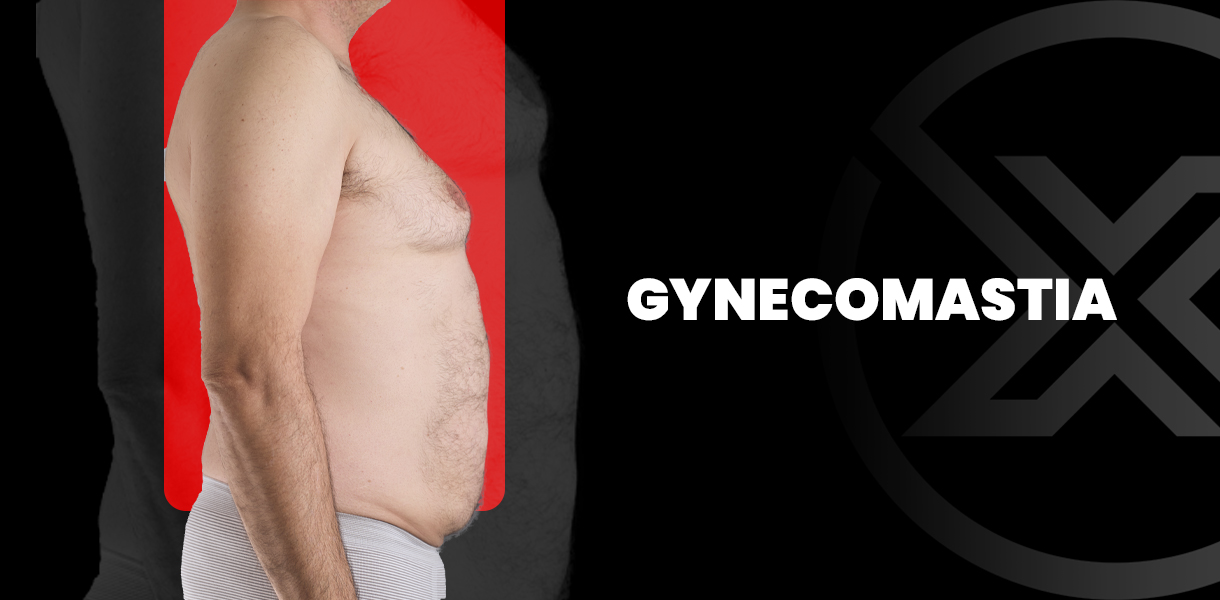
Gynecomastia, also known as “man boobs,” is a condition that affects many men worldwide. It is characterized by the enlargement of the breast tissue in males, leading to a more feminine appearance. In this article, we will delve into the causes, symptoms, and various treatment options available for gynecomastia.
Gynecomastia is a medical condition that results in the enlargement of breast tissue in males. It can occur at any age, from infancy to old age, and affects approximately 30% of males at some point in their lives. The condition usually develops due to an imbalance of hormones, specifically an increase in estrogen levels or a decrease in testosterone levels.
Several factors can contribute to the development of gynecomastia. Hormonal imbalances, such as an increase in estrogen or a decrease in testosterone, are the most common causes. This can occur naturally during puberty, as well as in older men due to age-related hormonal changes.
Certain medications can also lead to gynecomastia, including anti-androgens used to treat prostate cancer, anabolic steroids, and some medications for heart conditions. Additionally, the use of recreational drugs, such as marijuana and heroin, can increase the risk of developing gynecomastia.
The main symptom of gynecomastia is the enlargement of breast tissue in males. This can range from a small amount of tissue behind the nipple to a more significant enlargement that resembles female breasts. Gynecomastia is usually painless, but some individuals may experience tenderness or swelling in the affected area.
It’s important to note that gynecomastia is different from pseudo-gynecomastia, which is the accumulation of fat in the chest area. Pseudogynecomastia can be addressed through lifestyle changes, while true gynecomastia may require medical intervention.
If you suspect that you have gynecomastia, it is essential to consult with a healthcare professional for a proper diagnosis. During the examination, your doctor will evaluate your medical history and perform a physical examination. They may also order additional tests, such as blood tests or imaging studies, to rule out any underlying conditions.
In some cases, a breast biopsy may be necessary to confirm the diagnosis and rule out the possibility of breast cancer. It’s crucial to remember that gynecomastia itself is not a risk factor for breast cancer, but the condition should still be properly evaluated.
The treatment for gynecomastia depends on the underlying cause and the severity of the condition. In many cases, gynecomastia resolves on its own without the need for intervention. However, if the condition persists or causes distress, there are several treatment options available.
In some cases, medications may be prescribed to help reduce the size of the breast tissue or alleviate symptoms. These medications work by either blocking the effects of estrogen or increasing testosterone levels. However, it’s important to note that medication is not always effective, and results may vary.
For individuals with severe gynecomastia or those who haven’t responded to other treatments, surgery may be recommended. The two most common surgical procedures for gynecomastia are liposuction and mastectomy.
Liposuction involves removing excess fat from the chest area through a small incision, while mastectomy involves the removal of breast tissue. In some cases, a combination of both procedures may be necessary to achieve the desired results. It’s essential to discuss the potential risks and benefits of surgery with your healthcare provider before making a decision.
In mild cases of gynecomastia, lifestyle changes may be sufficient to manage the condition. These changes may include maintaining a healthy weight, engaging in regular exercise, and avoiding the use of recreational drugs and certain medications known to contribute to gynecomastia.
It’s also important to address any underlying hormonal imbalances through proper medical management. In some cases, making these lifestyle changes can help reduce the size of the breast tissue and alleviate symptoms.
Living with gynecomastia can be challenging, both physically and emotionally. Individuals with gynecomastia need to seek support and resources to help them navigate their journey. There are various support groups, online forums, and healthcare professionals specializing in gynecomastia who can provide guidance and understanding.
Gynecomastia is a common condition that affects many men worldwide. Understanding the causes, symptoms, and treatment options for gynecomastia is crucial for individuals who may be dealing with this condition. Whether it resolves on its own or requires medical intervention, it’s essential to seek a proper diagnosis and consult with healthcare professionals to determine the best course of action.
If you suspect you have gynecomastia, don’t hesitate to reach out for support and resources. Remember, you are not alone, and there are healthcare professionals and support networks available to help you through your journey. Take control of your health and seek the assistance you need to address gynecomastia and live a fulfilling life.
CTA: If you or someone you know is struggling with gynecomastia, reach out to a healthcare professional or join an online support group to learn more about available resources and treatment options. Remember, seeking help is the first step toward a healthier and happier life.
09:00 AM to 12:00 PM
Support Center 24/7
Orta Mh. Kanuni Sk. No: 5 (Kartal, İstanbul) W663+42
Copyright 2024 Clinixenter. All rights reserved.
 Online
Aylin Yazici
Online
Aylin Yazici
Use this feature to chat with our agent.
WhatsApp us